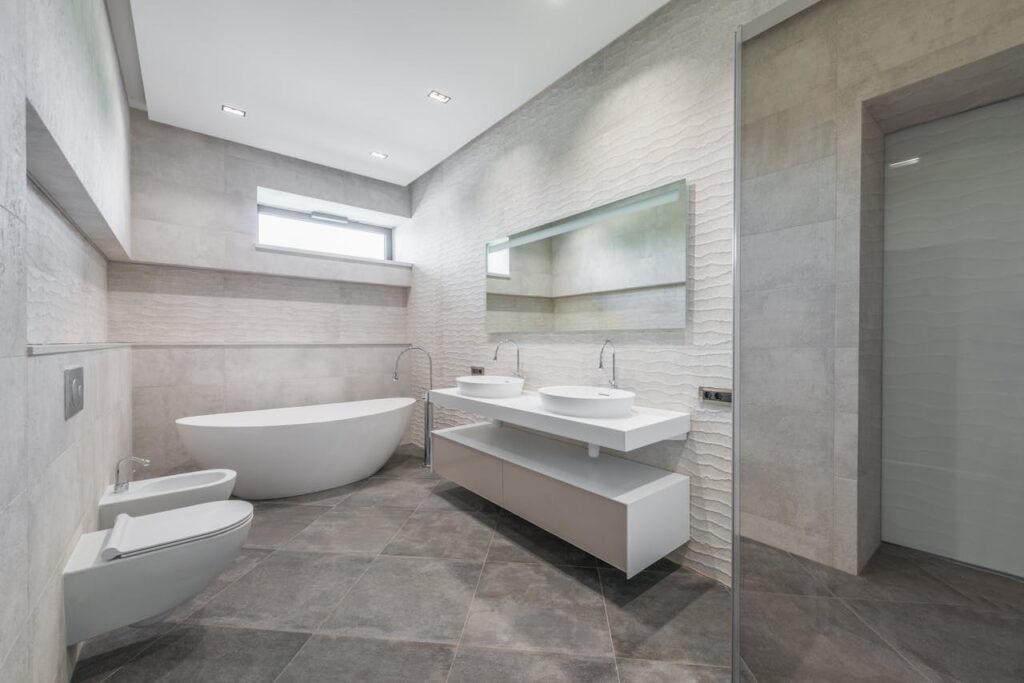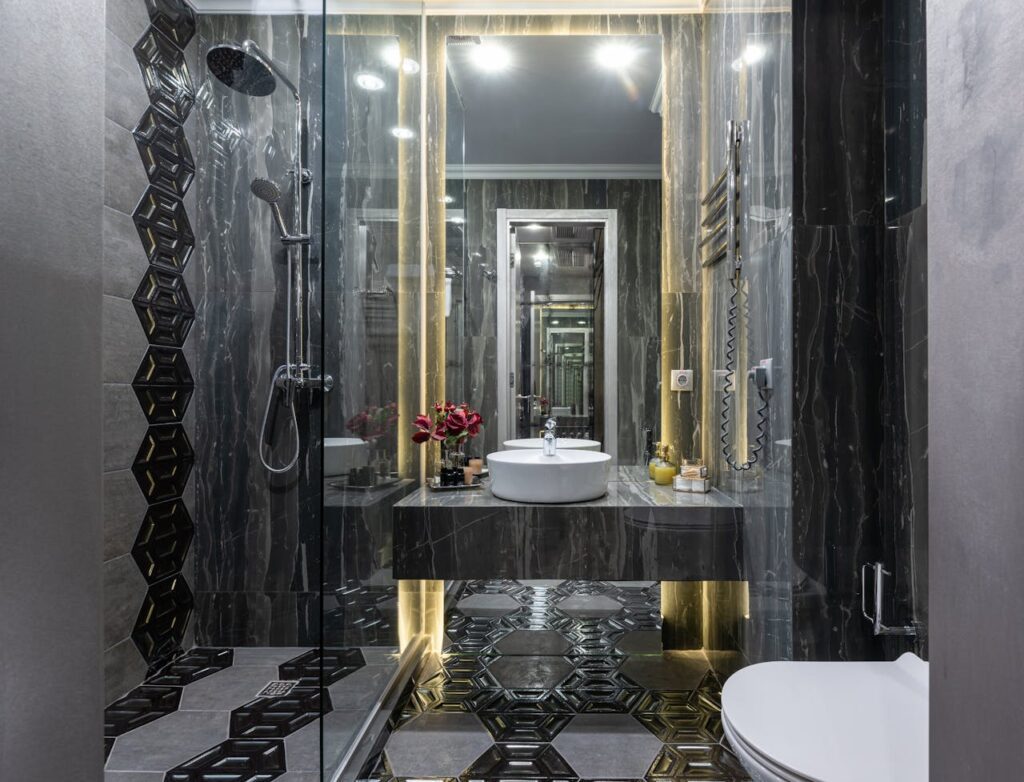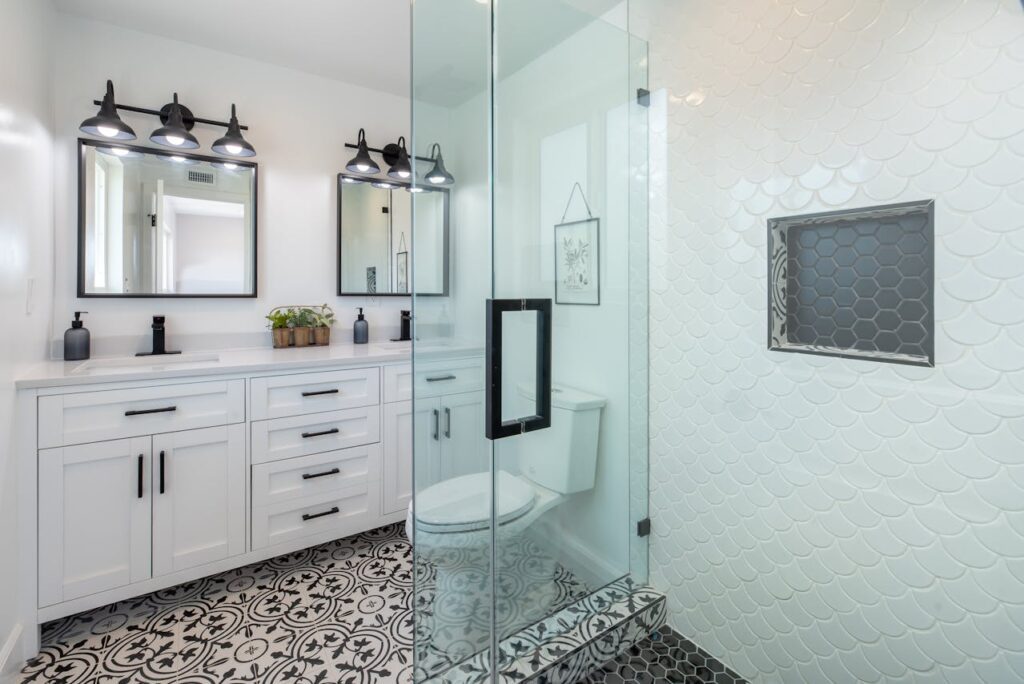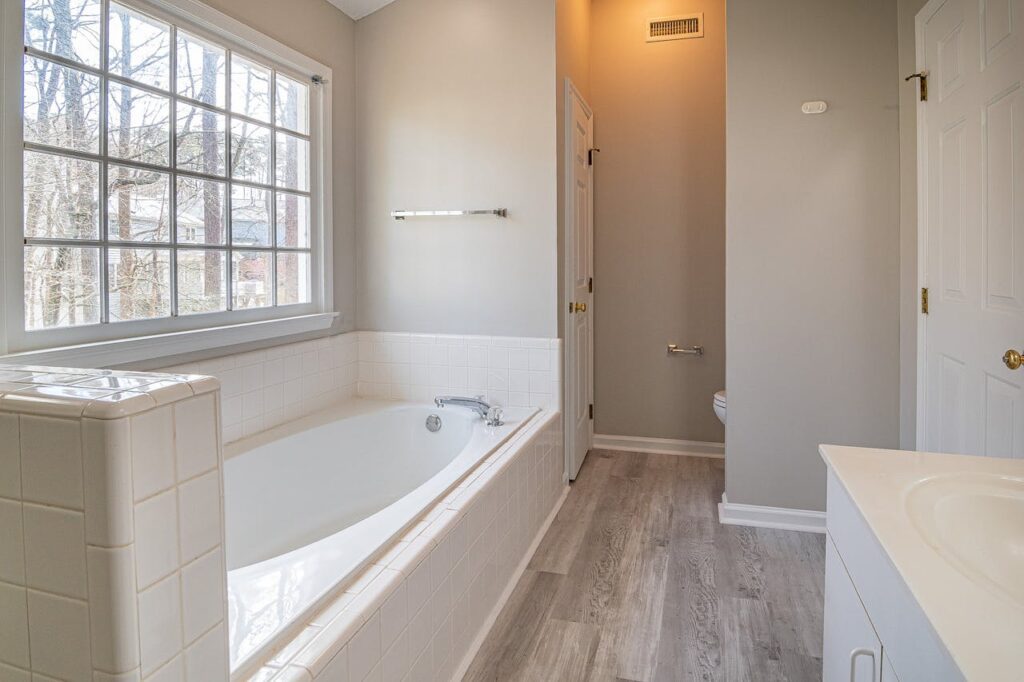When it comes to choosing tile flooring for bathrooms, knowing the do’s and don’ts is crucial. Understanding what works best in terms of style, durability, and maintenance can make a significant difference in your bathroom’s overall look and functionality. By considering factors such as material, size, color, and slip resistance, you can create a space that not only looks great but also stands the test of time. In this guide, we will explore essential tips to help you navigate the world of bathroom tile flooring effectively.
Understand Tile Types
Porcelain Tiles
Porcelain tiles are dense and less porous, making them highly water-resistant. They are suitable for bathroom applications due to their durability and low maintenance requirements. Porcelain tiles come in various textures, including matte, polished, and glazed finishes.
Porcelain tiles are ideal for bathrooms as they offer excellent moisture resistance, preventing water damage and mold growth. Their sturdy nature makes them less prone to cracks or chips, ensuring long-lasting beauty in your bathroom space.
Ceramic Tiles
Ceramic tiles are popular for their versatility and affordability. They come in a wide range of colors, patterns, and sizes, allowing for creative tile options in bathroom design. However, ceramic tiles are more porous than porcelain, requiring regular sealing to enhance their water resistance.
While ceramic tiles can be used in bathrooms, their moisture resistance is lower compared to porcelain. Proper maintenance is essential to prevent water absorption and ensure the longevity of ceramic tiles in wet environments like bathrooms.
Natural Stone Tiles
Natural stone tiles, such as marble, granite, and travertine, add a luxurious touch to bathrooms. Each type of natural stone offers unique tile textures and patterns, creating a one-of-a-kind look. However, natural stone tiles require sealing to protect against moisture penetration.
Although natural stone tiles bring elegance to bathrooms, they are more susceptible to water damage compared to porcelain and ceramic tiles. Regular sealing and maintenance are crucial to preserve the beauty of natural stone tiles in wet areas.
Evaluating Moisture Resistance
- Porcelain Tiles: High moisture resistance due to low porosity.
- Ceramic Tiles: Moderate moisture resistance; requires regular sealing.
- Natural stone Tiles: Lower moisture resistance; needs frequent sealing for protection.
Considering Long-Term Durability
- Porcelain Tiles: Highly durable and resistant to wear and tear.
- Ceramic Tiles: Durable but may require more maintenance over time.
- Natural Stone Tiles: Luxurious appearance but prone to staining and etching if not properly maintained.
Mix And Match Styles
Experiment Shapes
Mixing tile shapes can add a dynamic touch to your bathroom floor. Try combining hexagon, subway, and penny tiles for a visually appealing pattern.
Combine Sizes
Varying tile sizes can create an interesting visual effect. Consider mixing large format tiles with smaller mosaic tiles to achieve a balanced look.
Play With Textures
Incorporating different textures in your tile selection can enhance the overall design. Combine glossy and matte finishes for a sophisticated and modern appearance.
Traditional With Modern
Blend traditional and modern tile styles for a unique and personalized bathroom aesthetic. Pair classic subway tiles with contemporary geometric patterns for a timeless yet trendy look.
Use Grout As Design
Select Colors
Choose grout colors that either contrast or complement your bathroom tile design. This decision can significantly impact the overall look of your bathroom. Opt for a color that enhances the tiles without overpowering them.
Vary Widths
Employ grout width variations to create patterns or visual lines on your bathroom floor. This technique can help in highlighting specific areas or creating a unique design element. Experiment with different widths to achieve the desired effect.
Decorative Techniques
Incorporate decorative grout techniques to add character and personality to your bathroom flooring. From intricate designs to simple yet elegant patterns, decorative grouting can elevate the style of your bathroom. Consider incorporating complicated tile detailing for a more sophisticated look.
Utilizing grout as a design element in your bathroom can transform the space into a stunning and visually appealing area. By carefully selecting grout colors, varying widths, and incorporating decorative techniques, you can create an amazing bathroom design that reflects your style and preferences.
Opt For Light And Large Tiles
Choose Larger
Select larger tiles to minimize grout lines, reducing maintenance and creating a seamless appearance. Larger tiles are easier to clean and maintain compared to smaller ones. They also offer a modern and sleek look to the bathroom space.
Opt For Lighter
Opt for lighter-colored tiles as they can make the bathroom feel more spacious and airy. Lighter colors reflect light, making the room appear brighter and more inviting. These tiles are ideal for small bathrooms as they create an illusion of openness.
Position Diagonally
Consider positioning tiles diagonally instead of in a traditional straight layout. This arrangement can visually expand the space, making the bathroom feel larger than it is. The diagonal pattern adds a unique touch to the overall design, enhancing the aesthetic appeal of the bathroom.

Balance Function And Look
Prioritize Durability
When choosing tile flooring for bathrooms, prioritize durability to ensure it can withstand heavy foot traffic and moisture exposure. Opt for materials such as ceramic or porcelain, known for their resilience against water damage. Consider the tile’s PEI (Porcelain Enamel Institute) rating, indicating its suitability for various levels of use.
Assess Cleaning And Maintenance
Assess the ease of cleaning and maintenance when selecting tile designs. Look for tiles with a smooth surface that is easy to wipe clean, preventing the build-up of grime and mold in the bathroom. Grout color also plays a role in maintenance, with darker grout requiring more frequent cleaning than lighter options.
Safety And Usability
Ensure that aesthetic choices do not compromise safety and usability in the bathroom. Avoid glossy finishes on tiles, as they can be slippery when wet, posing a hazard. Instead, opt for textured or matte finishes that provide better traction underfoot, reducing the risk of slips and falls.
Avoid Trend Following
Timeless Styles
When choosing tile flooring for bathrooms, it’s essential to research timeless styles that will endure the test of time. Opt for classic designs like subway tiles or hexagonal patterns that have maintained their popularity over the years.
Personal Preference
Focus on personal preferences rather than being swayed by passing design trends. Consider your style and taste to ensure that the tiles you choose reflect your unique personality and aesthetic sensibilities.
Long-Term Vision
It is crucial to invest in tiles that align with your long-term vision for the space. Select durable materials that not only look appealing but also stand the test of time in terms of quality and functionality.
Limit Patterns And Colors
Restrict Patterns
When selecting tile flooring for bathrooms, it’s crucial to restrict the number of different patterns used. Mixing too many patterns can create a chaotic and overwhelming visual effect in the space. Opt for a cohesive look by sticking to one or two patterns throughout the bathroom floor.
Choose Tranquil Colors
To create a serene and relaxing atmosphere in your bathroom, focus on selecting a color palette that promotes tranquility. Soft, muted colors like pastel blues, greens, or earth tones can help to establish a calming ambiance. These colors are known to evoke feelings of peace and relaxation, perfect for a bathroom setting.
Avoid Overwhelming Designs
Steer clear of overwhelming designs that can detract from the overall aesthetic of the bathroom. Intricate patterns or bold, vibrant colors may overpower the space and make it feel cramped. Opt for simple and elegant designs that enhance the visual appeal of the bathroom without overwhelming the senses.
Pros:
- Creates a cohesive look
- Promotes a tranquil atmosphere
- Enhances the overall aesthetic of the bathroom
Cons:
- Limited flexibility in design choices
- May require more maintenance to keep clean
When it comes to choosing tile flooring for bathrooms, striking the right balance between patterns and colors is essential. By limiting the variety of patterns, opting for tranquil colors, and avoiding overwhelming designs, you can create a harmonious and visually appealing bathroom space that promotes relaxation and rejuvenation.
Ensure Slip-Resistance
Textured Surfaces
Select tiles with textured surfaces to enhance grip and prevent slips. Smooth tiles can become slippery when wet, posing a safety hazard in bathrooms. Textured tiles provide additional friction, reducing the risk of accidents.
Slip-Resistance Ratings
Check for slip-resistance ratings when choosing bathroom floor tiles. These ratings indicate how slip-resistant a tile is, with higher values offering better traction. Opt for tiles with a high coefficient of friction to ensure safety for all users.
Rugs Or Mats
Consider using rugs or mats in addition to tiles for added traction. Placing these non-slip accessories near the shower or bathtub can further enhance safety by providing a secure surface to step on. Rugs and mats also add a decorative element to the bathroom while serving a practical purpose.
Consider Maintenance Needs
Evaluate Cleaning Requirements
When choosing tile flooring for bathrooms, homeowners should carefully evaluate the cleaning requirements of different tile materials. Some tiles may require more frequent cleaning or specific cleaning products. It’s crucial to consider how much time and effort you are willing to invest in maintenance.
Natural stone tiles, such as marble or travertine, often require more maintenance compared to ceramic or porcelain tiles. These materials may need regular sealing to protect them from stains and damage. Homeowners need to factor in the additional care and cost associated with maintaining natural stone tiles.
Plan For Upkeep Of Natural Stone Tiles
Homeowners considering natural stone tiles should plan for the upkeep involved in maintaining these luxurious materials. Sealing natural stone tiles is essential to prevent water damage and staining. Failure to seal these tiles regularly can result in costly repairs or replacements down the line.
In addition to sealing, special care instructions may apply to natural stone tiles. Using gentle, pH-neutral cleaners and avoiding harsh chemicals is crucial to preserve the beauty and integrity of these tiles. Homeowners must be prepared to follow these maintenance guidelines to ensure the longevity of their natural stone flooring.
Factor In Longevity VS. Maintenance Demands
When selecting tile flooring for bathrooms, it’s essential to weigh the longevity of the tiles against their maintenance demands. While some tiles may be more durable and long-lasting, they could also require higher maintenance efforts. Conversely, low-maintenance tiles may have a shorter lifespan.
Consider opting for tiles that strike a balance between durability and maintenance requirements based on your lifestyle and preferences. Ceramic and porcelain tiles are popular choices due to their durability and ease of maintenance. These tiles offer a good compromise between longevity and upkeep, making them ideal for busy households.
Summary
Your bathroom tile choice plays a crucial role in both aesthetics and functionality. Understanding different tile types, mixing styles, utilizing grout for design, and opting for light, large tiles can transform your space. Balancing function with appearance while avoiding trends, limiting patterns and colors, ensuring slip resistance, and considering maintenance needs are key factors to keep in mind. Your bathroom should reflect your style while being practical and safe.
Make informed decisions when selecting bathroom tiles to create a space that aligns with your vision and meets your needs. By following these do’s and don’ts, you can achieve a beautiful and functional bathroom that enhances your daily routine. Take the time to explore various options, prioritize quality and safety, and personalize your space to make it truly yours.
Elevate Your Bathroom with Red White & Blue Construction!
Dreaming of a stunning bathroom upgrade? Let’s make it a reality with the perfect tile flooring solution! At Red White & Blue Construction, we’re not just installing tiles—we’re transforming your bathroom in Lafayette, CA, into a luxurious retreat you’ll love. From sleek, modern designs to timeless classics, every tile is expertly placed to create a space that’s as durable as it is beautiful.
Imagine stepping into a bathroom where the tile floor enhances both comfort and style. With our cutting-edge techniques and eye for detail, we ensure your flooring not only looks fantastic but stands the test of time. Whether you’re looking for a bold statement or a subtle elegance, we offer innovative tile options to suit your taste.
At Red White & Blue Construction, we’re known throughout the Bay Area for delivering excellence. Our commitment to quality, transparent pricing, and hands-on client engagement makes the remodeling process exciting and stress-free. You’re not just upgrading a bathroom—you’re reimagining your home’s potential!
Let’s turn your bathroom into the serene, stylish space you deserve. Choose Red White & Blue Construction for tile flooring that sets the foundation for years of beauty and functionality. Transform Your Bathroom with Us—Get in Touch Today!
Disclaimer
The materials available on this website are for informational and entertainment purposes only and not to provide advice. You should obtain advice concerning any particular issue or problem from a professional. You should not act or refrain from acting based on any content included in this site without seeking legal or other professional advice. The information presented on this website may not reflect the most current building developments. No action should be taken in reliance on the information on this website. We disclaim all liability concerning actions taken or not taken based on any or all of the contents of this site to the fullest extent permitted by law.





